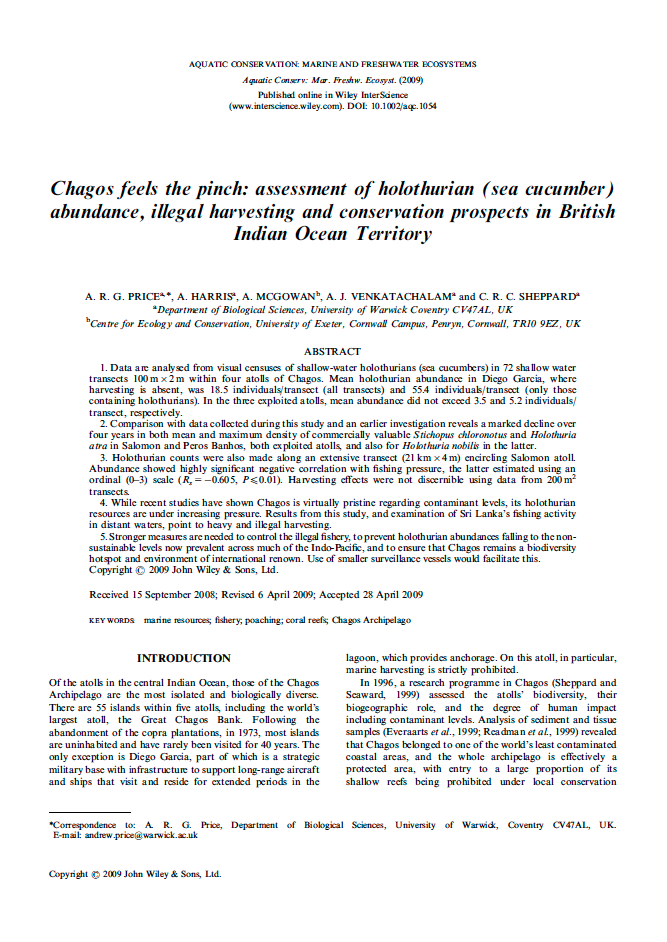Abstract
1. Data are analysed from visual censuses of shallow-water holothurians (sea cucumbers) in 72 shallow water transects 100m!2m within four atolls of Chagos. Mean holothurian abundance in Diego Garcia, where harvesting is absent, was 18.5 individuals/transect (all transects) and 55.4 individuals/transect (only those containing holothurians). In the three exploited atolls, mean abundance did not exceed 3.5 and 5.2 individuals/transect, respectively.
2. Comparison with data collected during this study and an earlier investigation reveals a marked decline over four years in both mean and maximum density of commercially valuable Stichopus chloronotus and Holothuria atra in Salomon and Peros Banhos, both exploited atolls, and also for Holothuria nobilis in the latter.
3. Holothurian counts were also made along an extensive transect (21km!4 m) encircling Salomon atoll. Abundance showed highly significant negative correlation with fishing pressure, the latter estimated using an ordinal (0–3) scale (Rs5″0.605, Pp0.01). Harvesting effects were not discernible using data from 200m2 transects.
4. While recent studies have shown Chagos is virtually pristine regarding contaminant levels, its holothurian resources are under increasing pressure. Results from this study, and examination of Sri Lanka’s fishing activity in distant waters, point to heavy and illegal harvesting.
5. Stronger measures are needed to control the illegal fishery, to prevent holothurian abundances falling to the nonsustainable levels now prevalent across much of the Indo-Pacific, and to ensure that Chagos remains a biodiversity hotspot and environment of international renown. Use of smaller surveillance vessels would facilitate this.

















